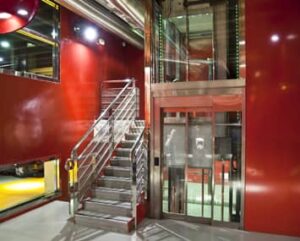Elevators have been a prominent invention in mankind’s history. Their humble beginnings as a platform attached to ropes have paved the way for the smooth electric box rides we enjoy today. As more technology becomes available, New Jersey elevator companies will have more opportunities to add onto the already impressive history of the elevator.
Invention and evolution
There are claims that vertical lifts have been used to build the pyramids in Egypt; however the first documented use has been in the third century B.C., according to Elevator History. The Greek mathematician, physicist and astronomer, Archimedes, is credited with inventing the first known elevator, according to Landmark Elevator. His device was operated by ropes and pulleys with the ropes coiled around a winding drum by a capstan and levers. These early lifts, or hoists, were powered by people, animals or water and were primarily used to lift heavy loads such as water or building materials.
According to Otis Worldwide, simple elevator systems have lifted people as early as the first century A.D. The Roman Coliseum especially used lifts to raise gladiators and wild animals up from lower levels to the arena level. In medieval times, it was hoists that made everyday tasks easier.
The earliest known elevator built for passenger use was by King Louis XV and was known as the flying chair according to This is Versailles. He used it for his mistresses to secretly visit him. Once the steam engine was invented in 1765 by James Watt, elevators were capable of moving larger, heavier loads such as coal, lumber and steel. From there, elevators became safer, (Elisha Graves Otis introduced the first safety device that prevented the elevator from plummeting to the ground in case the cables broke according to Funding Universe Company Histories), more modern (the use of electricity helped to create motors, automatically closing doors, and complete automation) and faster (Otis Elevators installed the first control system that automatically controlled the varying speed of elevators in 1924 according to Otis).
These are exciting times for innovation and as buildings continue to grow, elevators and New Jersey elevator companies will continue to evolve. In the next couple of years, there will be an increase in safety features, speed, and weight capacity for commercial and private elevators. There could even be an elevator to space, according to NASA. The elevator would extend from a base tower approximately 31 miles tall attached to a geostationary satellite 22,236 miles above the Earth!


Recent Comments